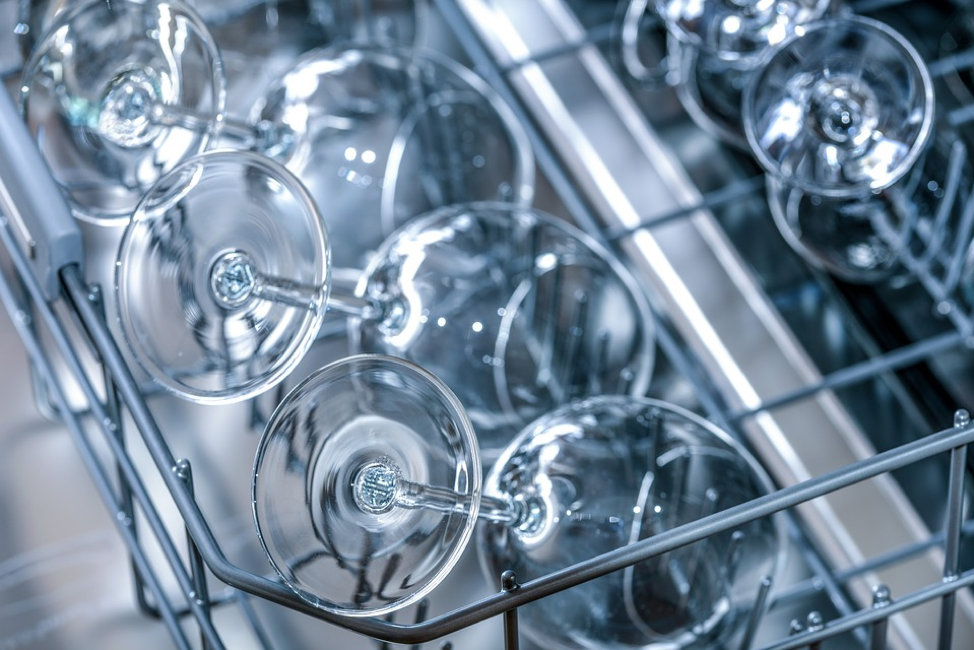Of all the major appliances in the average household kitchen, it is undoubtedly the dishwasher that works the hardest of them all.
Four out of five US households report relying on their dishwasher to help keep their dishes, glasses, pots, and pans sparkling clean. With many families using their dishwasher more than once a day, these kitchen workhorses really can take a beating.
It’s logical to wonder if you need to clean your dishwasher, considering that it’s very job is to clean. The short answer is: Yes! Even though it is their sole purpose in life to clean dishes, the inside of your dishwasher needs some TLC from time to time in order to stay in tip-top shape.
Hiding in Plain Sight
Take a moment to consider the inside of your dishwasher. With all those parts and moving pieces, rubber gaskets, and nooks and crannies, the inside of your dishwasher offers many hiding places for gunk, muck, and grime. Left undisturbed, the accumulation of food debris, grease, and detergent residue becomes a breeding ground for bacteria.
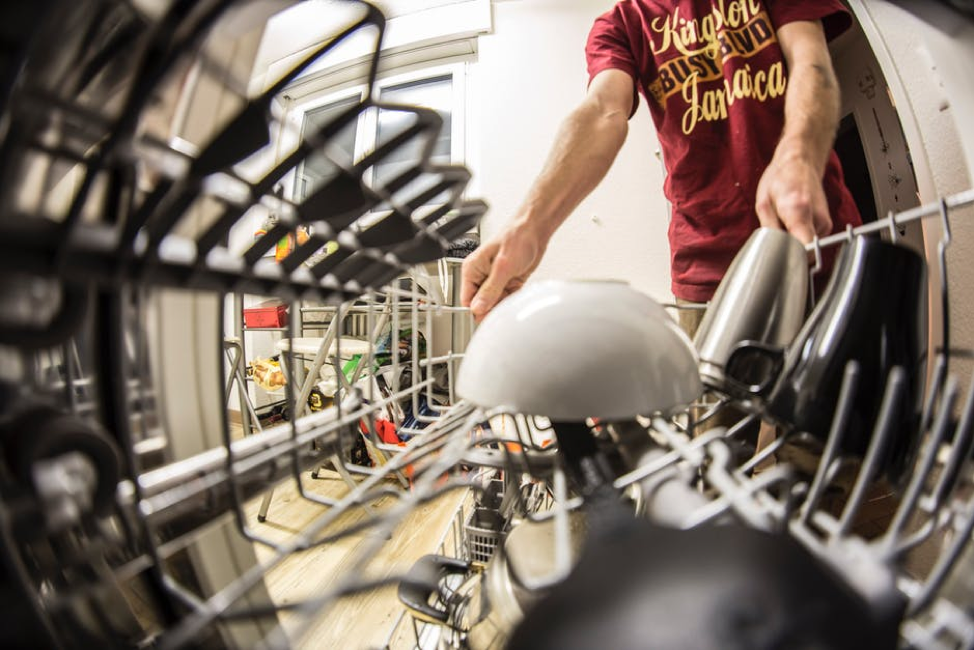
Additionally, areas that remain constantly damp, such as the rubber gasket sealing the edge of the door, create the perfect condition for mold growth. This mold can not only compromise the gasket, but it can also cause allergic reactions in sensitive family members.
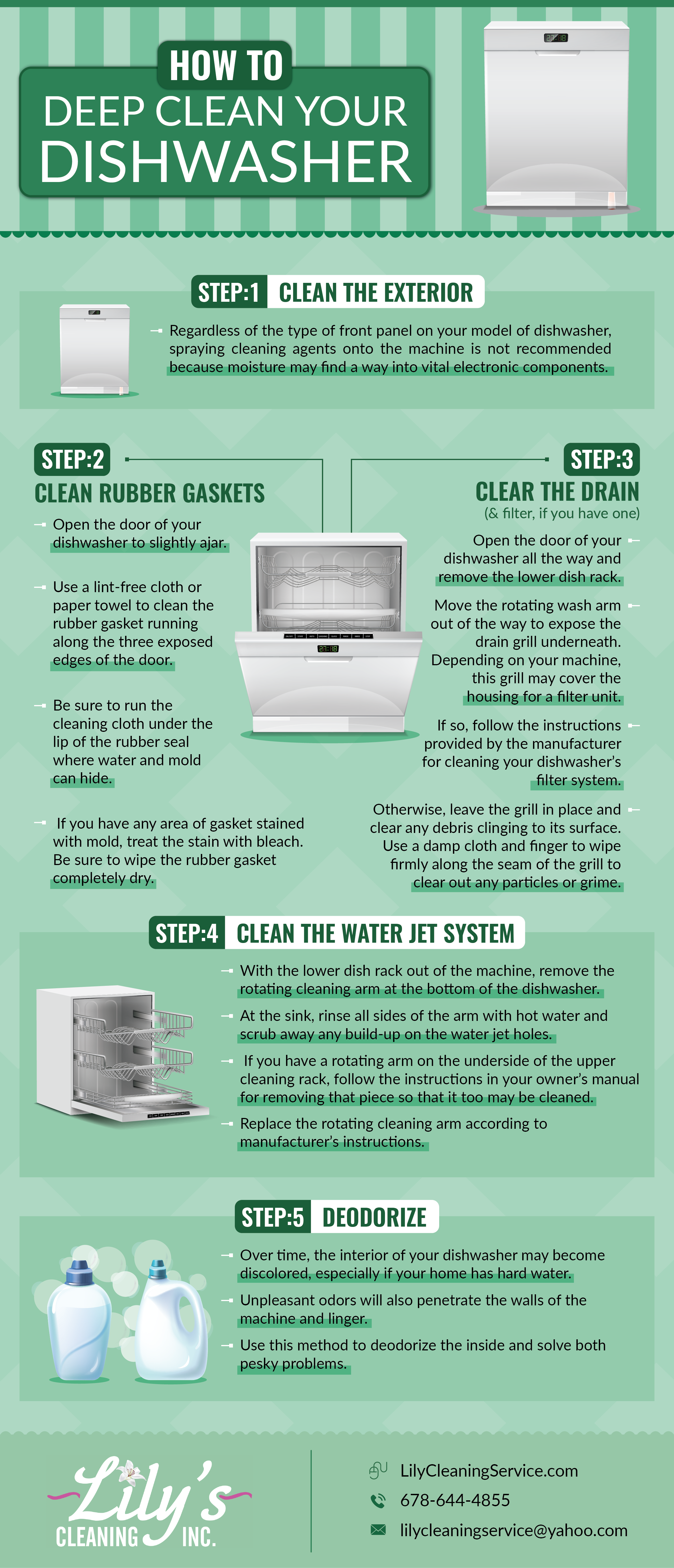
How to Deep Clean Your Dishwasher
Step 1: Clean the Exterior
Regardless of the type of front panel on your model of dishwasher, spraying cleaning agents onto the machine is not recommended because moisture may find a way into vital electronic components.
Plastic Front Panel
For dishwashers with a plastic front panel, use a sponge, hot water, and soap to scrub the front of the machine to remove food particles, water stains, and smudges. Avoid any electronic buttons or displays. Then, with a lint-free cloth or paper towel, dry the panel and use the now dampened cloth or towel to wipe down the electronic panel.
Stainless Steel Front Panel
For dishwashers with a stainless steel front panel, a lint-free cloth or paper towel sprayed with glass cleaner is the best choice for removing dirt and fingerprints from both the panel and electronic buttons and displays.
Step 2: Clean rubber gaskets
Open the door of your dishwasher to slightly ajar. Use a lint-free cloth or paper towel to clean the rubber gasket running along the three exposed edges of the door. Be sure to run the cleaning cloth under the lip of the rubber seal where water and mold can hide. If you have any area of gasket stained with mold, treat the stain with bleach. Be sure to wipe the rubber gasket completely dry.
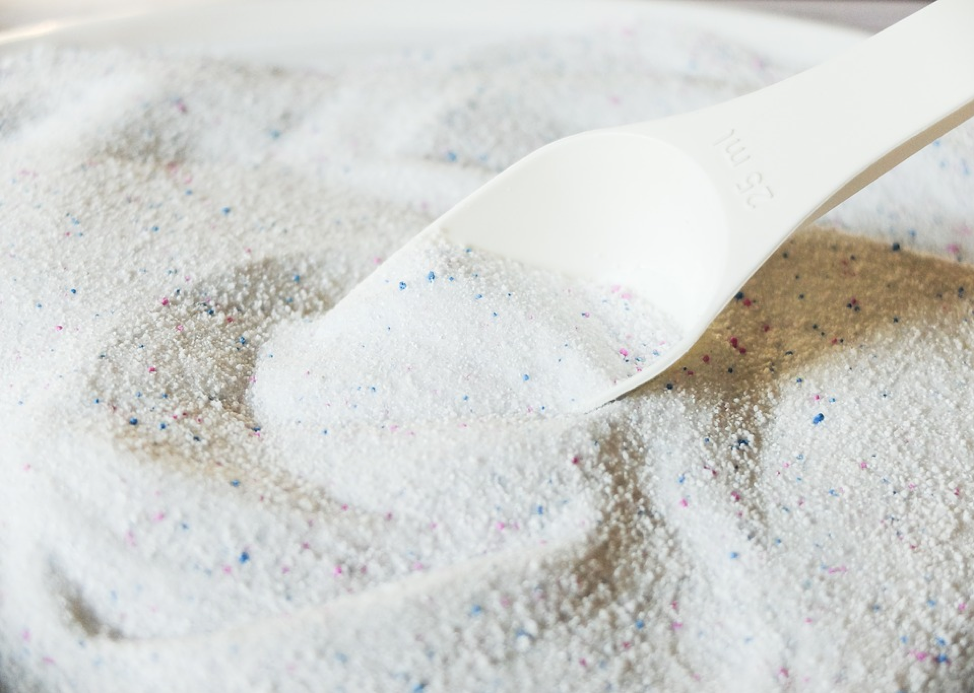
Step 3: Clear the drain (and filter, if you have one)
Open the door of your dishwasher all the way and remove the lower dish rack. Move the rotating wash arm out of the way to expose the drain grill underneath. Depending on your machine, this grill may cover the housing for a filter unit. If so, follow the instructions provided by the manufacturer for cleaning your dishwasher’s filter system. Otherwise, leave the grill in place and clear any debris clinging to its surface. Use a damp cloth and finger to wipe firmly along the seam of the grill to clear out any particles or grime.
Step 4: Clean the water jet system
With the lower dish rack out of the machine, remove the rotating cleaning arm at the bottom of the dishwasher. At the sink, rinse all sides of the arm with hot water and scrub away any build-up on the water jet holes. If you have a rotating arm on the underside of the upper cleaning rack, follow the instructions in your owner’s manual for removing that piece so that it too may be cleaned. Replace the rotating cleaning arm according to manufacturer’s instructions.
Before undertaking this step, you should refer to your owner’s manual for instructions specific to your dishwasher’s make and model.
Step 5: Deodorize
Over time, the interior of your dishwasher may become discolored, especially if your home has hard water. Unpleasant odors will also penetrate the walls of the machine and linger. Use this method to deodorize the inside and solve both pesky problems.
Replace the lower dish rack in your machine. Pour two to three cups of white vinegar into a dishwasher-safe bowl and set the bowl on the lower dish rack. Run your dishwasher on the hottest setting.
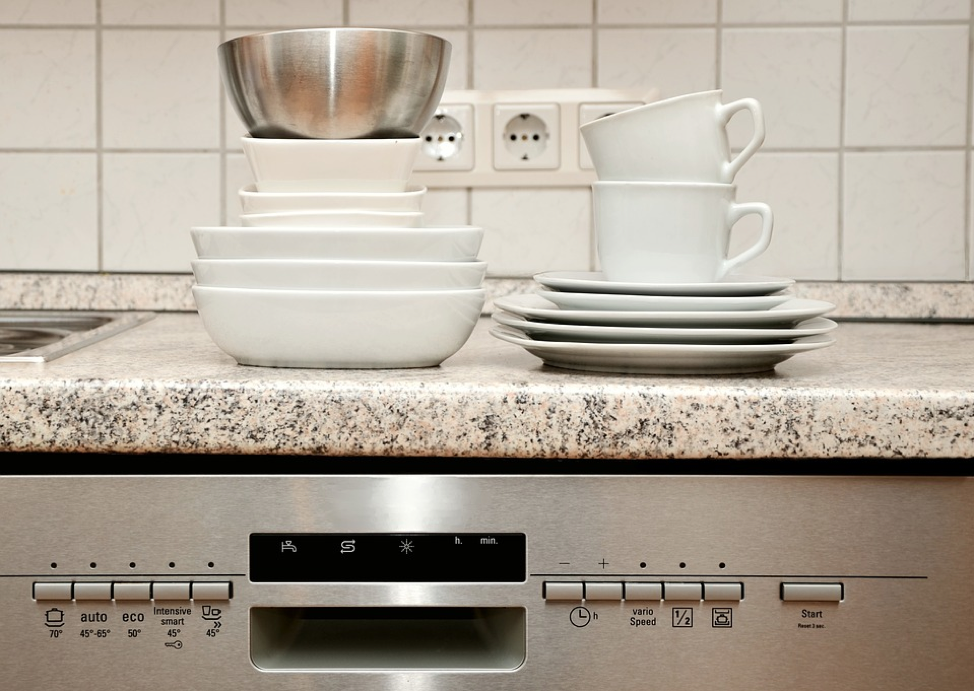
Daily Tips for Keeping Your Dishwasher Clean
Taking the time once a month to follow the four steps outlined above will help keep your dishwasher in good working order. But there are some small habits you can do on a daily basis to ensure your dishwasher goes the distance.
- Scrape, don’t rinse. Scrape large food debris off of plates and utensil into the waste bin or compost before placing in the dishwasher. There is no need to pre-rinse dishes. Doing so may confuse the auto-sensor on newer machines into thinking dishes are cleaner than they really are. Besides, pre-rinsing dishes uses more water without guaranteeing better results.
- Leave the door ajar between loads. This is especially important after a wash cycle has completed and the inner compartment and rubber seals are still damp. Keeping the inside of your machine dry will extend the life of the dishwasher’s components and prevent the growth of mold or bacteria.
- Use high quality detergent. Or at least the highest quality dish detergent your household budget will allow. There are many ways to economize on household expenses, but cheap dish detergent isn’t one of them. Not only will you create more work for yourself when dishes emerge from the wash still unclean (and perhaps with food particles baked on by the heated dry cycle), cheap dishwashing detergents can leave behind residue on the inside of your dishwasher. Over time, this residue can build up and clog the spray system or drain, creating more work and headaches for you.
Leave the Details to the Pros
We don’t all have time to deep clean the dishwasher once a month. Our attentive, professional cleaners know how to clean your home top to bottom — including all the crevices of your dishwasher — using only using safe, non-toxic methods. Contact Lily’s Cleaning Service to schedule a home cleaning consultation today.

